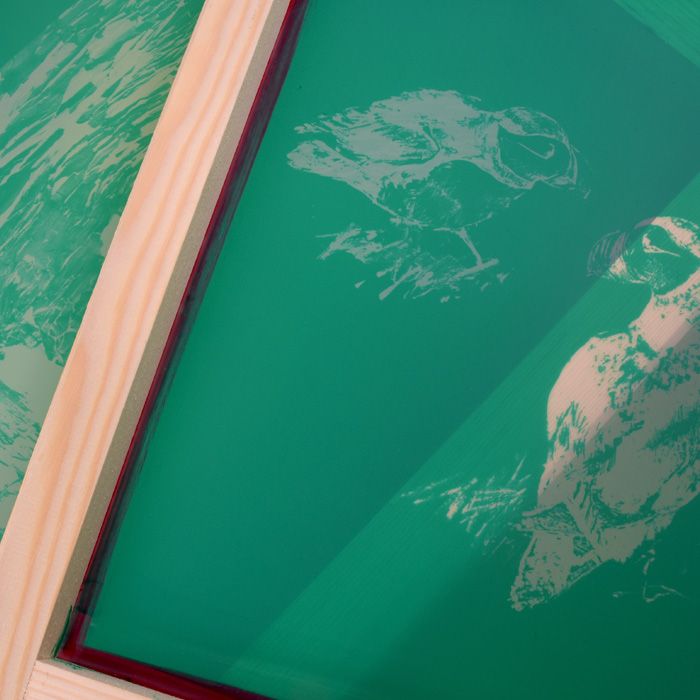Best Local T-Shirt Printing for Personalized Apparel
Best Local T-Shirt Printing for Personalized Apparel
Blog Article
Display Printing Uncovered: Every Little Thing You Need to Know Concerning Tee Shirt and Garment Printing Techniques
Display printing is a fascinating technique that combines art with technique, offering unlimited opportunities for imagination. Ready to explore the crucial elements that make display publishing an art type?
The Basics of Display Printing: Just How It Works
When you plunge right into display printing, you'll uncover it's both a science and an art. At its core, screen printing involves creating a pattern, or screen, that permits ink to travel through just in particular areas (screen printing kit). You begin by selecting your style and preparing your screen with a light-sensitive solution. Once you reveal this solution to light, it sets, leaving your design as an adverse area.
Following, you'll mix your inks and prepare your printing surface area. Setting the screen over the textile, then make use of a squeegee to push ink with the display onto the garment. This process needs precision, as you want clear, vivid prints. After printing, you'll cure the ink with warmth, ensuring it complies with the textile and lasts with cleans. Each step is necessary, and grasping them will certainly elevate your screen printing skills, changing simple garments into one-of-a-kind, expressive pieces.
Kinds of Screen Printing Techniques
When you comprehend the essentials of display printing, it's time to discover the numerous techniques that can boost your styles. One prominent method is standard screen printing, where ink is pushed through a stenciled display.
If you're going for fine information, think about discharge printing. This strategy removes color from the fabric, leaving a soft, classic look. Another alternative is plastisol printing, known for its resilience and vivid colors, making it a favorite for several brand names. Ultimately, experiment with halftone printing to develop gradient impacts and elaborate styles. Each method has its one-of-a-kind beauty, so don't be reluctant to try them bent on find what suits your style best!
Important Devices for Screen Printing
To achieve spectacular lead to screen printing, having the ideal devices is basic. First, you'll need a strong display printing framework, which holds the mesh that transfers your design onto the garment. Next, spend in top notch squeegees; these are essential for using ink equally across the screen. You'll additionally require a good direct exposure device to create your displays, along with a washout booth for cleaning them after use. A dependable warmth resource, like a conveyor dryer or warmth press, is important for curing your prints to ensure longevity. Do not neglect a proper work area, outfitted with tables and storage for your supplies. Lastly, safety equipment, such as gloves and masks, will certainly maintain you risk-free from chemicals and inks. With the right devices, you'll be well on your way to generating professional-quality prints.
Selecting the Right Inks and Products
When selecting inks and materials for screen printing, you require to think about the kind of ink that functions finest for your job. Consider material compatibility to ensure your styles look terrific and last long. Additionally, discover green ink choices to make your printing procedure a lot more sustainable.
Types of Display Inks
Picking the appropriate screen ink is necessary for accomplishing lively, resilient prints that fulfill your job's needs. There are numerous kinds of screen inks to check out. Plastisol ink is prominent for its flexibility and simplicity of use, providing superb shade opacity on dark textiles. Water-based ink, on the various other hand, offers a softer feel and is green, making it perfect for those seeking to lessen their environmental impact. Release inks remove dye from the fabric, causing a soft, vintage look yet require certain handling. Ultimately, specialty inks, such as metal or glow-in-the-dark, can add distinct impacts to your layouts. Evaluate your task requirements and select the ink that aligns ideal with your desired outcome.

Material Compatibility Considerations
Comprehending material compatibility is crucial for accomplishing top notch screen prints, specifically given that different materials react distinctly to various inks. When selecting inks, consider the fabric type-- cotton, polyester, or blends. For cotton, water-based inks work well, offering soft qualities and breathability. Polyester, on the various other hand, commonly requires plastisol inks for far better attachment and lively shades. You might require to utilize a mix of both kinds if you're publishing on blends. Always evaluate your inks on example material to ensure they adhere correctly and maintain shade honesty. Additionally, maintain in mind that material weight and texture can influence the last end result, so selecting the right ink and product combo is important for your project's success.
Eco-Friendly Ink Options
Environment-friendly inks are ending up being a popular choice for screen printers that desire to reduce their ecological impact while maintaining quality. When selecting inks, think about water-based inks, which are less hazardous and much easier to cleanse up contrasted to typical solvents.
In addition, try to find inks made from renewable energies, such as soy or vegetable-based alternatives. By picking the best inks and products, you'll not just produce sensational styles but likewise contribute to a more lasting printing procedure. Make the switch, and your prints will reflect your dedication to the setting!
Preparing Your Style for Display Printing

File Layout Demands
To ensure your style looks vivid and sharp on fabric, you'll require to pay close interest to file format requirements for display printing. Make sure your layout has a transparent history find out here to prevent unwanted white sides on your prints. Maintain color settings in mind; CMYK is standard for screen printing, so transform your RGB designs as necessary.
Color Splitting Up Methods
Shade splitting up is an essential step in preparing your style for screen printing, and grasping it can substantially enhance your print high quality. You'll need to damage your layout into private shades, as each color requires a different display during printing. This accuracy not just ensures exact color depiction but additionally enhances the printing procedure.
Resolution and Size
Achieving the ideal outcomes in display printing starts with assuring your layout has the ideal resolution and dimension. Ideally, your artwork needs to be at least 300 DPI (dots per inch) for sharp, clear prints. If you use lower resolution, your final product might look unprofessional and pixelated.
When it comes to size, consider the measurements of your print location. Layout your artwork to match the final print size, preferably producing it in the actual dimensions you'll be publishing. In this manner, you'll stay clear of any type of unanticipated scaling issues.
Constantly examine your design in both vector and raster styles. my site Vector graphics can be scaled without losing high quality, making them excellent for screen printing. Preparing appropriately will ensure your design looks fantastic on every garment!
Step-by-Step Screen Printing Process
Display printing is a vibrant process that permits you to create vibrant designs on numerous surface areas. To obtain begun, you'll need a screen, solution, and your selected ink.
Pour ink onto the display and make use of a squeegee to press the ink via the pattern onto the textile. Lift the screen very carefully and let the print dry. You have actually efficiently screen printed your style.
Tips for Effective Screen Printing Projects
While you're diving into your screen printing jobs, bear in mind that preparation is crucial to success. Begin by gathering all your products-- inks, squeegees, garments, and displays. A clean office helps stop unwanted mistakes, so clean up prior to you begin.
Following, verify your art work is high-resolution and appropriately sized for your garment. Evaluate your screen for correct exposure and tidy it completely to stay clear of smudges. When blending your inks, comply with the manufacturer's standards to achieve the right uniformity.
Throughout printing, use even pressure with your squeegee for constant outcomes. Do not rush; take your time to confirm each print fulfills your standards. After printing, allow your garments dry completely before taking care of or packaging them.
Lastly, constantly keep an example of your benefit future referral. By doing this, you can assess your development and boost your methods with time. Pleased printing!

Frequently Asked Questions
For how long Does It Require To Set up a Screen Printing Task?
Establishing a screen printing job commonly takes around thirty minutes to an hour. You'll prepare the displays, mix inks, and change the press. The time varies based on intricacy and experience, so remain organized!
Can I Publish on Various Material Enters Utilizing the Same Technique?
Yes, you can print on different fabric types making use of the exact same strategy, yet you'll need to change your inks and settings. Some materials absorb ink in different ways, so exploring assurances the most effective outcomes for each product.
What Prevail Errors to Prevent in Screen Printing?
When display printing, prevent common blunders like making use of the incorrect ink, ignoring proper direct exposure times, or avoiding pre-press checks. Always examine your arrangement and preserve tidy screens to guarantee top quality outcomes each time.
Exactly How Can I Properly Tidy and Maintain My Display Printing Devices?
To correctly tidy and preserve your display printing equipment, you need to frequently wash displays with appropriate solvents, examine squeegees for wear, and ensure all tools are kept dry and dust-free. Uniformity boosts and avoids pricey repairs efficiency.
Is Display Printing Eco-friendly Contrasted to Other Techniques?
Display printing can be a lot more environmentally pleasant than other approaches, particularly if you use eco-conscious materials and water-based inks. By choosing lasting supplies and techniques, you decrease waste and minimize your influence on the world.
Screen Printing Uncovered: Every Little Thing You Required to Know About T-Shirt and Garment Printing Techniques
At its core, display printing involves producing a pattern, or screen, that enables ink to pass through only in details areas. Placement the screen over the fabric, then utilize a squeegee to press ink via the display onto the garment. visite site One popular technique is standard display printing, where ink is pushed with a stenciled display.When picking inks and products for screen printing, you need to take into account the type of ink that functions ideal for your project.
Report this page